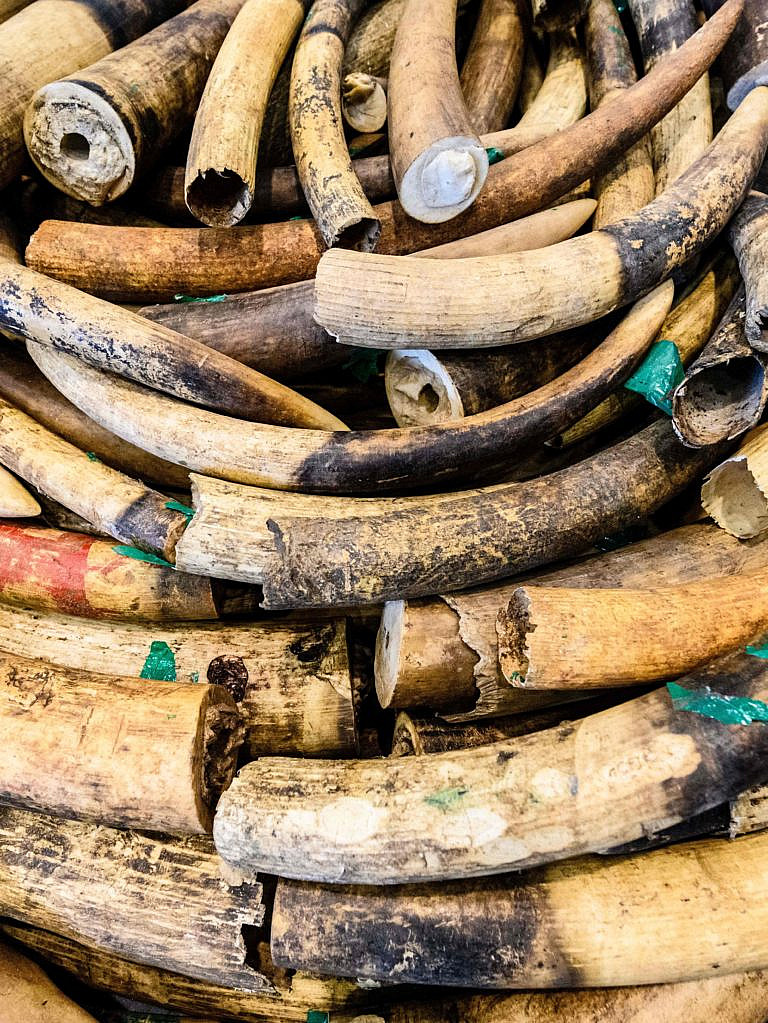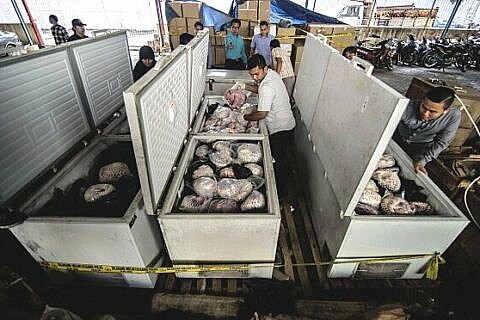A “Pandemic-Adjusted” World

New data from the C4ADS Wildlife Seizure Dashboard shows that we are still living through a “pandemic-adjusted” world vis-à-vis wildlife seizure rates, illuminating new opportunities for preventative action.
The onset of the COVID-19 pandemic disrupted international trade and the global economy, impacting both licit commercial activity and transnational illicit trafficking networks. In particular, seizures of certain types of wildlife experienced an overall decline shortly after restrictions began. Some observers suggested that wildlife seizures, a key metric for measuring an otherwise clandestine trade, would surge once restrictions eased, posing further threats to public health and at-risk wildlife populations. Reading this discourse, counter wildlife trafficking stakeholders stood prepared for a return to “business as usual” once the world reopened.
Evaluating “Pandemic-Adjusted” Trends #
Over the past year, the international economy rebounded, lockdowns decreased, and international travel resumed. In a “pandemic-adjusted” landscape rife with anecdotal reporting, seizure data analysis quantitatively monitors changes in the wildlife crime economy. These analytical insights can inform the allocation of counter-wildlife trafficking resources, channeling capacity to hotspots and guiding more effective impact against the networks committing these crimes.
The C4ADS Wildlife Seizure Dashboard’s data on 2022 elephant ivory, rhino horn, pangolin, tiger, and leopard seizures puts these insights into the hands of users. The following trends augment C4ADS’ understanding of the changing landscape:
- Contrary to expectations, the total seizures of intercontinentally-trafficked elephant ivory, rhino horn, and pangolin products have not yet returned to pre-pandemic (2017-2019 average) levels.
- Compared to 2020, the amount of product seized in the maritime sector increased.
- The average weight of ivory seizures increased, while rhino horn and pangolin scale average seizure weights varied.
- Seized wildlife product transported intra-regionally (such as leopard and tiger specimens or derivatives) stayed relatively steady in 2022, compared to the fluctuations in wildlife products more traditionally trafficked between continents.
2022: Total Number of Seizures #
Despite widespread reopening of the global economy, the total number of wildlife seizures recorded in 2022 (449) is 41 percent lower than the average number of seizures recorded between 2017 and 2019. This trend did not manifest equally for all countries, potentially due to varied reopening timelines. For example, many countries that reopened in early 2022, like Malaysia, experienced an increase in wildlife seizures, but low seizure counts persisted in countries that maintained strict lockdowns throughout 2022, like China. Considering that China is a prominent destination and consumer market for trafficked wildlife, it will be critical to monitor how wildlife seizures shift for the country in the coming year.
Maritime Seizures Rebounding #
In 2022, maritime seizures accounted for over 50 percent of the cumulative weight of seized elephant ivory, rhino horn, and pangolin scales across all transportation types – a trend that has not been present since 2019. Furthermore, after an initial plunge in 2020, there was a 37 percent increase in the total weight of products seized in the maritime sector between 2021 and 2022.
The increased weight of seized wildlife shipments transported by sea may signal an “increased reliance on maritime cargo by traffickers” as illicit wildlife trafficking operations resume and navigate around lingering restrictions to other transportation methods, such as a reduced number of passenger flights. Additionally, prior to the advent of the pandemic, the average weight of seizures transported by air declined each year since 2016, indicating a diminishing presence of seized bulk wildlife shipments in that transportation sector. In the year ahead, it is essential to continue monitoring the role of the maritime sector in transporting illicit wildlife.
Wildlife Category-Specific Trends #
By breaking down seizure data by wildlife category, stakeholders can more effectively target their efforts and resources. From evaluations of the 2022 seizure data, C4ADS identified the following category-specific trends:
- Both the total and average weight of ivory seized in 2022 was higher than in the previous two years. In particular, the weight of an average ivory seizure in 2022 (81kg) was even higher than the average 2019 seizure weight (59kg), which indicates that bulk ivory shipments are on the rise.
- By contrast, the average weight of seized rhino horn was lower in 2022 (14kg, which is worth approximately $300,000 on the black market) than the average weight seized in 2021 (29kg), but still almost twice as heavy as the average rhino horn seizure size in the initial phases of the pandemic in 2020 (9kg).
- Between 2021 and 2022, the average weight of pangolin-scale seizures decreased by more than half (from 335kg to 158kg), a difference in value of $62,835 in the pre-pandemic Chinese market.
- Whereas the number of seized ivory shipments, typically trafficked intercontinentally, remains well below the pre-pandemic average (2017-2019), the numbers of seizures of wildlife categories more frequently trafficked over land and intra-regionally – such as tiger and leopard – remained relatively steady across the pandemic years of 2020 to 2022. One contributing factor to this trend is that land-based transport was subject to less intensive pandemic restrictions than intercontinental shipping methods (air and maritime), and are inherently more challenging to regulate given the numerous transport modes available over land and the difficulty in regulating them.
Looking Ahead: 2023 #
Ultimately, data from the C4ADS Wildlife Seizure Dashboard suggests that wildlife traffickers have yet to adapt to “pandemic-adjusted” circumstances. This transitional period presents a unique window of opportunity for counter-wildlife trafficking stakeholders to anticipate impending changes and orient their actions accordingly.
In calibrating their efforts in 2023, stakeholders can consider several potential factors which may continue to play a role in shifting seizure trends:
- While the pandemic restrictions began abruptly, the course of reopening is more incremental, which may cause seizures to advance at a similar rate. Additionally, the fact that countries have reopened at different times throughout the past year may also contribute to divergent seizure trends at a more country-specific level, such as China rolling back its “zero-COVID” policy in December 2022.
- Wildlife trafficking, particularly of ivory, may be more prevalent than it was in the early phases of the pandemic. With open borders, resumed trade and transportation, and less intense lockdowns in much of the world, traffickers now have more opportunity to transport wildlife products.
- On the other hand, with fewer restrictions in place, law enforcement officials may have more capacity to intercept illicit wildlife shipments.
It is important to note that, given the clandestine nature of wildlife trafficking, there are extensive limitations on the conclusions that can be drawn from publicly-reported seizure datasets. However, through the comprehensive collection and analysis of wildlife seizure data, it becomes possible to trace the development of broader trends, identify emerging risk indicators, and develop a more holistic picture of the mechanics of global wildlife trafficking.
To combat wildlife trafficking in 2023, C4ADS recommends the following based on our analysis:
- For stakeholders in law enforcement – Prioritize investigative follow-up on wildlife seizures linked to your mandated jurisdiction(s) in order to improve detection of other wildlife shipments that may be eluding interception.
- For stakeholders in the maritime transportation sector – Increase screening of transcontinental shipments traversing known trafficking corridors to improve interception rates.
- For stakeholders in journalism – Promote detailed public reporting of wildlife seizures to further the possibilities of seizure analysis.
- For supporters of counter-wildlife trafficking efforts – Monitor the C4ADS Wildlife Seizure Dashboard for emerging geographic trends in 2023 as countries continue to loosen pandemic-related restrictions.






